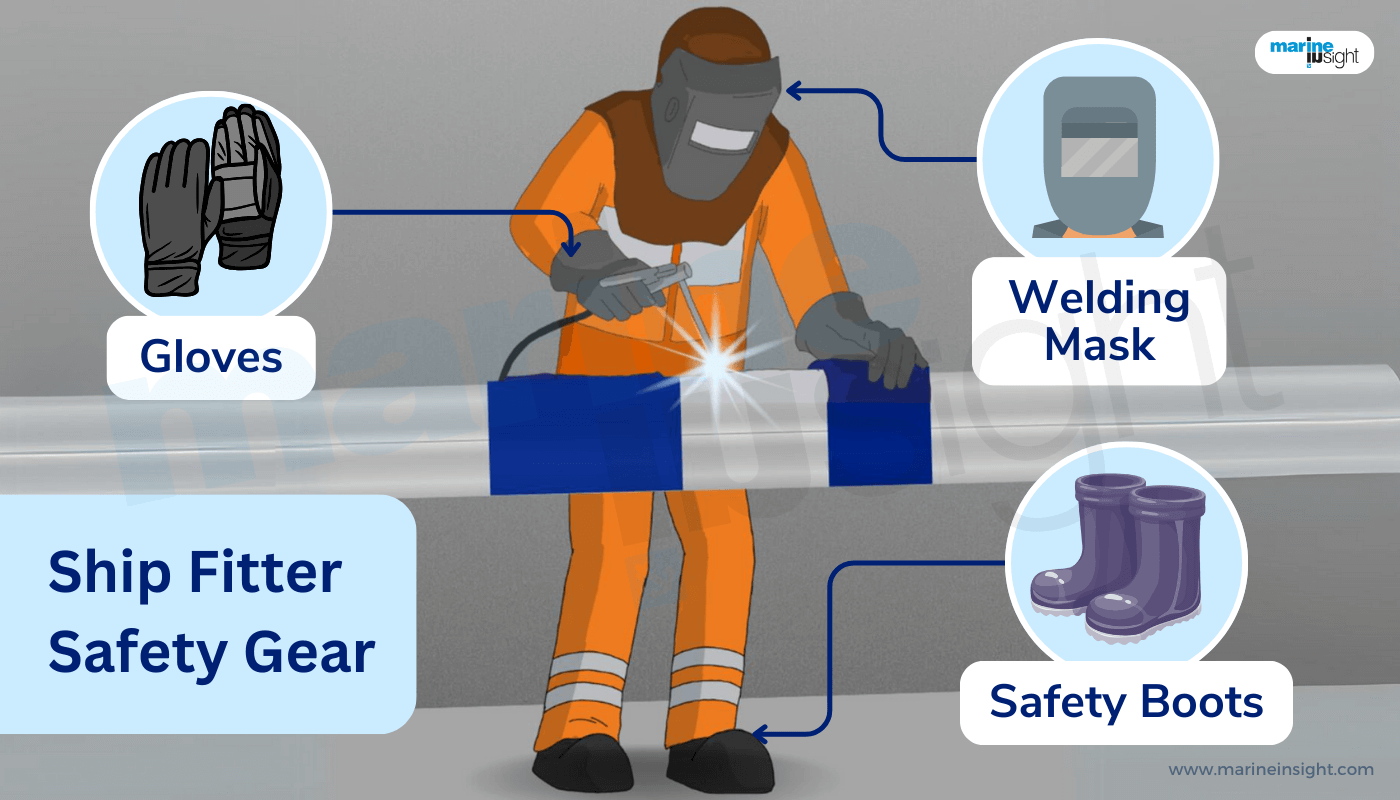Who is a Fitter in the Merchant Navy?
Fitter in the Merchant Navy is an important job position on board ships that requires great skill and expertise. Fitters help construct, maintain, and repair all kinds of ships, including container ships, bulk carriers, icebreaker ships, and tankers.
Fitters also work onboard offshore oil rigs and offshore vessels. Navy fitters work onboard aircraft carriers, submarines and other naval vessels. They have experience in carpentry, welding and handling steel, copper, and other metals.
Fitters’ work is challenging, involving onboard mechanical systems, pumps, engines, generators, heating and cooling systems, etc. On ships, they usually work in the engine department under the supervision and guidance of the second engineer.
There used to be two fitters on board ships, one in the engine and the other in the deck department, called engine fitters and deck fitters. With companies adopting minimum manning requirements to save costs, nowadays, there is usually one fitter onboard vessels; however, occasionally, a company might assign another fitter on the deck side, given the size of the ship or the amount of fabrication work required.
Duties & Responsibilities of Fitters on Ships
Fitters are experts in handling ship machinery and equipment to ensure a vessel’s integrity and seaworthiness. They can also operate forklifts and overhead cranes and work according to the engineering drawings. Fitters also handle onboard piping systems, elevators, and even hydraulic systems.

Fitters can work with drill presses, benders, and hydraulic sheers and inspect, maintain, test and repair hoists.
Some of their duties or responsibilities are listed below:
- Work as per the order of the 2nd engineer onboard the ship
- Receive work instructions from the Chief Officer if there is some work on the deck side
- Ensure that all mechanical equipment on the ship is working properly.
- Safely use, store and handle equipment used in welding or cutting.
- Prioritise the safety of oneself and others while carrying out the designated tasks.
- Undertake steel, copper, PVC and flange piping.
- Know how to work with blow torches, saws, plasma cutters and grinders.
- Fit all plumbing, sewer and HVAC Systems adequately.
- Ability to read engineering prints or drawings correctly and work with exact measurements.
- Construct skids, boat bumpers, ladders, and walkways.
- Must be able to work in confined spaces or at heights and during adverse weather.
- In some companies, they are responsible for keeping inventory of welding equipment and gases onboard ships.
- They should know all the workshop tools and how to operate them.
Skills needed to be a fitter
Emphasis on minute details: To be a fitter in the merchant navy, one has to pay close attention to details. Even a tiny mistake in the measurement or one wrong cut might compromise the vessel’s safety and functionality.

Stable hands: One should have a steady hand to hold and work efficiently with heavy equipment.
Manual Strength: This is important as fitters have to work with heavy metal, which they might have to lift during welding or cutting.
Eligibility Criteria to Become a Fitter in India (6-month GP rating Course)
To become a fitter, one must pursue a 6-month GP Rating Course.
Educational: At least 40% marks from a recognised board are needed in English, Science, and Maths in 10th or 12th Class.
A minimum of 40% marks in English in 10th/12th standards is necessary.
Candidates wanting to do a pre-sea GP rating course for fitters/welders must pass a 2-year ITI Course certified by the Department of Vocational Education and Training/ National Council of Vocational Training as a fitter/machinist/mechanist/welder/turner with a minimum of 40% total marks in the final year of the ITI Course.

Age: Candidates should be between the ages of 17.5 and 25.
Medical: Candidates must be physically fit, per the Merchant Shipping Guidelines. Vision must be normal in both eyes ( 6/6) with normal eye movement and no colour blindness.
After completing the GP Rating Course and obtaining the ITI Certification, you can join as a trainee fitter on a merchant ship. Usually, you have to complete at least 3 contracts to get promoted to the position of a fitter.
Also, after completing 3 years at sea as a trainee or fitter, one can also apply for a Class IV Certificate of Competency to become a Marine Engineer.
In many countries, fitters must complete a formal training course or apprenticeship in mechanical engineering or marine technology. Fitters also hold licences or certifications, such as a Merchant Mariner Credential or a Transportation Worker Identification Credential.
Fitter Salary in Merchant Navy
A ship fitter is a vital position in a ship’s engineering department. The salaries of ship fitters vary according to the Shipping Company, the type of the ship and working experience.
Experienced fitters have the opportunity to advance to higher positions, such as supervisors, with increased responsibilities and higher pay. The location of the job also plays a significant role in determining the salary, as fitters in high-cost cities like New York, Hawaii, or Alaska tend to earn more compared to those in states with a lower cost of living.
According to Payscale data, fitters in the maritime sector generally earn more than their counterparts in offshore manufacturing or transportation sectors. Additionally, fitters working on offshore platforms earn higher salaries due to the inherent risks involved in their work.
In the merchant navy, fitters typically earn between $1400 to $2000 USD per month. Entry-level fitters with less than a year of experience earn around $25,000 annually, while those with 10 to 20 years of experience can earn approximately $65,000 annually.
In conclusion, fitters in the Merchant Navy play a crucial role in ensuring the efficient operation of mechanical equipment and systems on ships. Their work involves using various tools and metals for maintenance and repairs, requiring a high level of skill and expertise to ensure the seaworthiness of the ship. different words and structure:
The information needs to be paraphrased.

